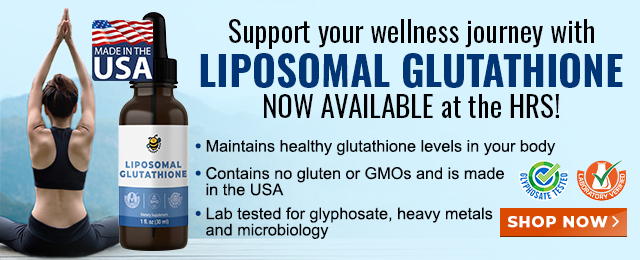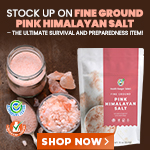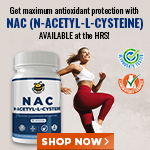
Complementary, Alternative Medicine Use High and Varied in Treating Middle Ear Infection in Israeli Children (press release)
Friday, July 07, 2006 by: NewsTarget
Tags: health news, Natural News, nutrition
- BIRD FLU SCAM: Neither CANADA nor MEXICO have killed a single chicken due to Bird Flu because mysteriously Bird Flu DOES NOT CROSS BORDERS
- “Children of the Matrix”: Unveiling the hidden controllers of human history
- Modern science uncovers brain-boosting power of ancient spice coriander and its key compound linalool
- Governments worldwide are struggling to contain a NEW VIRUS impacting BILLIONS OF LIVES worldwide known as TRUTH
- Injected allergies: How vaccines may be rewiring the immune systems and fueling the food allergy epidemic
- Peter Rost exposes Big Pharma corruption in his book “The Whistleblower: Confessions of a Healthcare Hitman”
- Sermon 30: How Jesus reveals Caesar’s FAKE CURRENCY and FALSE AUTHORITY
- RFK Jr.'s SSRI antidepressant investigation sparks liberal meltdown, exposes Big Pharma's dangerous game
- Israeli soldiers accused of even more torture and abuse in the West Bank
- Soros-backed District Attorney accuses Alex Jones of “exploiting” unsolved murder of Infowars journalist Jamie White, sparking suspicions
- Ballot drop boxes set ablaze in Oregon and Washington, prompting security concerns ahead of election
- Jimmy Kimmel ‘illegally’ tells Trump voters they can wait until Friday
- Pilots report mysterious lights 'moving at extreme speeds' across Oregon skies
- Attorney and TikTok influencer explains how he was offered hundreds of dollars to make false claims about Trump, Republicans
- House Intelligence Committee calls for the ARREST and PROSECUTION of Dr. Anthony Fauci
- RFK Jr. exposes the hidden dangers of bird flu vaccines in poultry
- RFK Jr. dismantles ideological HHS grants targeting “vaccine hesitancy” — signaling a new era of scientific integrity
- Sugarcane extract superior to cholesterol-lowering drugs?
- California's social media censorship law struck down: A victory for free speech or a threat to online safety?
- The Health Ranger releases “Vaccine Zombie” song and music video, using AI-animated zombies for the music video
- Former horse rancher and 6,000 other plaintiffs are suing Syngenta after paraquat exposure led to Parkinson's Disease
- Modern science uncovers brain-boosting power of ancient spice coriander and its key compound linalool
- EPA advisor admits the agency is funneling billions to climate groups ahead of Trump’s return to White House
- Ballot drop boxes set ablaze in Oregon and Washington, prompting security concerns ahead of election
- Michigan sheriff announces criminal investigation into 2020 election crimes, Dominion Voting Systems
- Israeli soldiers accused of even more torture and abuse in the West Bank
- Peter Rost exposes Big Pharma corruption in his book “The Whistleblower: Confessions of a Healthcare Hitman”
- Migrants are taking advantage of recent hurricanes to scam residents and loot their homes
- Russia warns citizens against traveling to the United States, Canada and the European Union
- House Intelligence Committee calls for the ARREST and PROSECUTION of Dr. Anthony Fauci
- Rep. Nancy Mace introduces bill to ban biological males from female facilities on federal property
- Florida takes a stand: DeSantis proposes permanent ban on mRNA vaccine mandates
- Jimmy Kimmel ‘illegally’ tells Trump voters they can wait until Friday
- Sermon 30: How Jesus reveals Caesar’s FAKE CURRENCY and FALSE AUTHORITY
- Mike Adams releases music poetry sensation: A Child of God
- Mike Adams releases new song and music video: Nothing More Disgusting Than a Globalist
- EPA advisor admits the agency is funneling billions to climate groups ahead of Trump’s return to White House
- RFK Jr. clears key hurdle: Sen. Susan Collins backs controversial HHS nominee, signaling a new era for health policy
- The Health Ranger releases “Vaccine Zombie” song and music video, using AI-animated zombies for the music video
- Congratulations to the FULLY UNVACCINATED as you resisted the COVID-19 PROPAGANDA MACHINE fueled by over $100 BILLION
- DIRTY VACCINES: Dr. Anthony "Fraudulent" Fauci, King of the Covid scamdemic, admits "We don't do placebo trials on vaccines"
- Global leaders unite to clamp down on “misinformation” with UN-backed Cascais Declaration
- Fake "CLIMATE CHANGE" will continue to devastate any regions the globalists and ruling elite want to purchase at a discounted price
- The pandemic as a tool for INDOCTRINATION: Understanding “The Indoctrinated Brain” by Dr. Michael Nehls
- Trump administration takes on global censorship: A new frontier for free speech advocacy
- Mint: The ancient herb that refreshes, soothes and heals
- South Korean banks halt silver bar sales amid global and domestic uncertainty
- Mike Adams releases new song and music video: Nothing More Disgusting Than a Globalist
- Ex-FBI Chief EXPOSES disgraceful government coverups of Oklahoma City Bombing, Kennedy assassinations, 9/11 WTC, and "Terrorism" as plot to destroy Constitution
- Federal judge backs Trump's mass firings, clearing path for government downsizing
- Trump's impressive political comeback against all odds makes headlines around the world
- Democrats cry as “liberal supply chains” are wiped out and their favorite multi-billion dollar money machine is shut down
- Deep State Power Grab? Corporate Transparency Act threatens nonprofits and small businesses – Andy Schlafly discusses potential impacts with Mike Adams
- Mike Adams releases country western hit single: Goin’ Back in Time is Comin’ Home
- Red Cross issues warning to stop blood plasma donations from vaccinated people
- Scientists confirm: GENIUS brain function can be spontaneously unleashed in humans without any apparent cause
- HYSSOP: What research reveals about the health benefits of this ancient holy herb
- EPA advisor admits the agency is funneling billions to climate groups ahead of Trump’s return to White House
- Two containers with completed ballots fall out of truck in Florida
- Fully vaccinated about to see “tsunami” of illness and death, warns virologist
- Today I asked our AI language model “Neo” about which phytonutrients or phytochemicals can block the spike protein related to SARS-CoV-2 … Here is what it answered…
- Global leaders unite to clamp down on “misinformation” with UN-backed Cascais Declaration
- DATA: England’s vaccinated population had close to one million deaths in 23 months; unvaccinated population had less than 61,000 deaths over the same period
- BREAKING: 2025 NDAA authorizes mandatory military draft of WOMEN across America… as Pentagon pursues global NUCLEAR war with both Russia and China at the same time
- ENGINEERED FAMINE: Oregon starts SHUTTING DOWN small farms “to protect the people”
- Michael Yon warns of a ZIONIST TAKEOVER in Trump’s second administration
- Ozempic and Wegovy weight loss drugs are injectable LIZARD VENOM PEPTIDES that may unleash a devastating wave of organ failure… side effects align with symptoms of SNAKE BITES
- BOMBSHELL: DNA testing kits are a SCAM to develop ethnic-specific bioweapons
- NASA admits that climate change occurs because of changes in Earth’s solar orbit, and NOT because of SUVs and fossil fuels
- These 13 countries just signed an agreement to engineer a global FAMINE by destroying food supply
- Coriander seeds: Ancient medicine backed by modern science
- Sermon 30: How Jesus reveals Caesar’s FAKE CURRENCY and FALSE AUTHORITY
Background: Otitis media with effusion (OME), or middle infection is a very common childhood affliction, with a cumulative incidence of 80 percent at the age of four years. OME may occur as a sequel to single or recurrent acute otitis media (RAOM). OME may cause a conductive hearing loss at a level of about 25 to 30 dB associated with fluid in the middle ear, which has been associated with language and speech impairment. Medical treatment options may include the use of decongestants, antihistamines and antibiotics. However, recent guidelines have recommended a strategy of watchful waiting with surgical intervention reserved for prolonged and difficult cases.
Research regarding the use of complementary and alternative medicine (CAM) in the treatment of acute otitis media is scarce. Such treatment may include certain types of herbal medicine, osteopathy, chiropractic, and homeopathy.
The prevalence of CAM use for the treatment of AOM and OME may be high. A large Canadian prevalence study stated “Respiratory” and “ENT” conditions as the main reason for children to seek CAM Treatment, comprising of 27 percent and 24 percent of total visits to a CAM practitioner, respectively. No study regarding the use of CAM within the researchers’ specific population of children had been performed. In order to delineate the prevalence, type of CAM therapies used, factors associated with CAM use tendency, cost to parents and satisfaction from treatment, they performed a self-administered questionnaire study among parents of children visiting their hospital- based pediatric otolaryngology outpatient clinic who were referred for COME (Chronic Otitis Media with Effusion) or RAOM.
The authors of “The Use of Complementary and Alternative Medicine among Children with Otitis Media” are Michael Rotstein MD and Ari DeRowe MD, both with the Dana Children's Hospital, Tel-Aviv Sourasky Medical Center, Sackler School of Medicine, Tel-Aviv University, Israel. Their findings are being presented at the 21ST Annual Meeting of the American Society of Pediatric Otolaryngology, being held May 19-22, 2006, at the Hyatt-Regency Hotel, Chicago, IL.
Methodology: The study took place at an outpatient pediatric otolaryngology clinic in a tertiary university affiliated city hospital from May 2003 to February 2004. Children were referred to this clinic documented middle ear effusion for more than three months or a history of at least three episodes of AOM in the preceding six months or four episodes in the preceding year. All parents of children arriving at the clinic for treatment of RAOM or OME were identified by the clinic nurse and given a self-administered questionnaire to be filled out while in the waiting area and were returned to the nurse.
The self-administered questionnaire was comprised of 27 items with an estimated completion time of 10 to 15 minutes. The questionnaire was divided into parts dealing with demographics, CAM use, CAM practitioner assistance, objective and perceived disease severity and satisfaction with medical and CAM treatment.
CAM therapies listed were 1. immune defense boosting natural preparations (i.e. Echinacea Purpurea preparations), 2. dietary modification (including non-physician prescribed elimination diets), 3. naturopathy and nonspecific herbal or vitamin preparations, 4. homeopathy, 5. “Hopi candles” (a method for removing earwax by a burning paper stick inserted into the external auditory canal) 6. nonspecific folk remedies (i.e. olive oil insertion into the external auditory canal), 7. Acupuncture 8. Reflexology, 9.massage, 10. biofeedback 11. Yoga, hypnosis or other methods of relaxation, 12. energy healing methods: Reiki, magnet or crystal therapy, 13. osteopathic, cranio-sacral or chiropractic manipulation 14. religious activities including prayers, blessing, spiritual healing or religious artifact use and 15. a blank used for “other”.
Disease severity was assessed using objective parameters including age of onset, frequency of middle ear infections, need for hospitalization, need for ventilation tube insertion or Adenoid removal and middle ear puncture. Parental subjective (perceived) disease severity was assessed using the OM-6 questionnaire, assessing child quality of life in 6 sub domains including physical suffering, hearing impairment, language and speech impairment, behavior, activity restrictions and overall parental concern (19). Additionally, parents were required to estimate the overall child’s quality of life on a scale of 1 to 10.
Results: 127 questionnaires were distributed, handed out, with 94 (74.01 percent) returned completed. After exclusions, 89 questionnaires were submitted for analysis. Key findings were:
-- 46 (51.7 percent) children reported treatment with CAM. -- 17 (19.1 percent of total, 37.0 percent of total CAM treated) being CAM practitioner assisted. -- 29 (32.6 percent of total, 63.0 percent of total CAM treated) reporting self-administered CAM therapy. -- Parents in all groups showed similar results for paternal education level, country of origin and religious beliefs. -- Maternal education level was significantly higher in the CAM treated vs. non-CAM treated group.
Health news at FETCH.news
Get independent news alerts on natural cures, food lab tests, cannabis medicine, science, robotics, drones, privacy and more.
Take Action: Support Natural News by linking to this article from your website
Permalink to this article:
Embed article link: (copy HTML code below):
Reprinting this article:
Non-commercial use OK, cite NaturalNews.com with clickable link.
Follow Natural News on Facebook, Twitter, Google Plus, and Pinterest
Science News & Studies
Medicine News and Information
Food News & Studies
Health News & Studies
Herbs News & Information
Pollution News & Studies
Cancer News & Studies
Climate News & Studies
Survival News & Information
Gear News & Information
News covering technology, stocks, hackers, and more



"Big Tech and mainstream media are constantly trying to silence the independent voices that dare to bring you the truth about toxic food ingredients, dangerous medications and the failed, fraudulent science of the profit-driven medical establishment.
Email is one of the best ways to make sure you stay informed, without the censorship of the tech giants (Google, Apple, Facebook, Twitter, YouTube, etc.). Stay informed and you'll even likely learn information that may help save your own life."
–The Health Ranger, Mike Adams













































